While there are three macronutrients gardeners need to stay on top of—NPK, nitrogen, potassium, and phosphorus—it seems like nitrogen is the nutrient folks are most concerned about—and for good reason!
Without a strong source of nitrogen, your vegetable plants can suffer from slowed growth, low yields, and lack of color. Eventually, poor nitrogen reserves can make your plants weak enough that they more easily succumb to diseases and pest infestations. So let’s figure out how to get nitrogen to your plants so you can have a bumper crop of your favorite veggies!
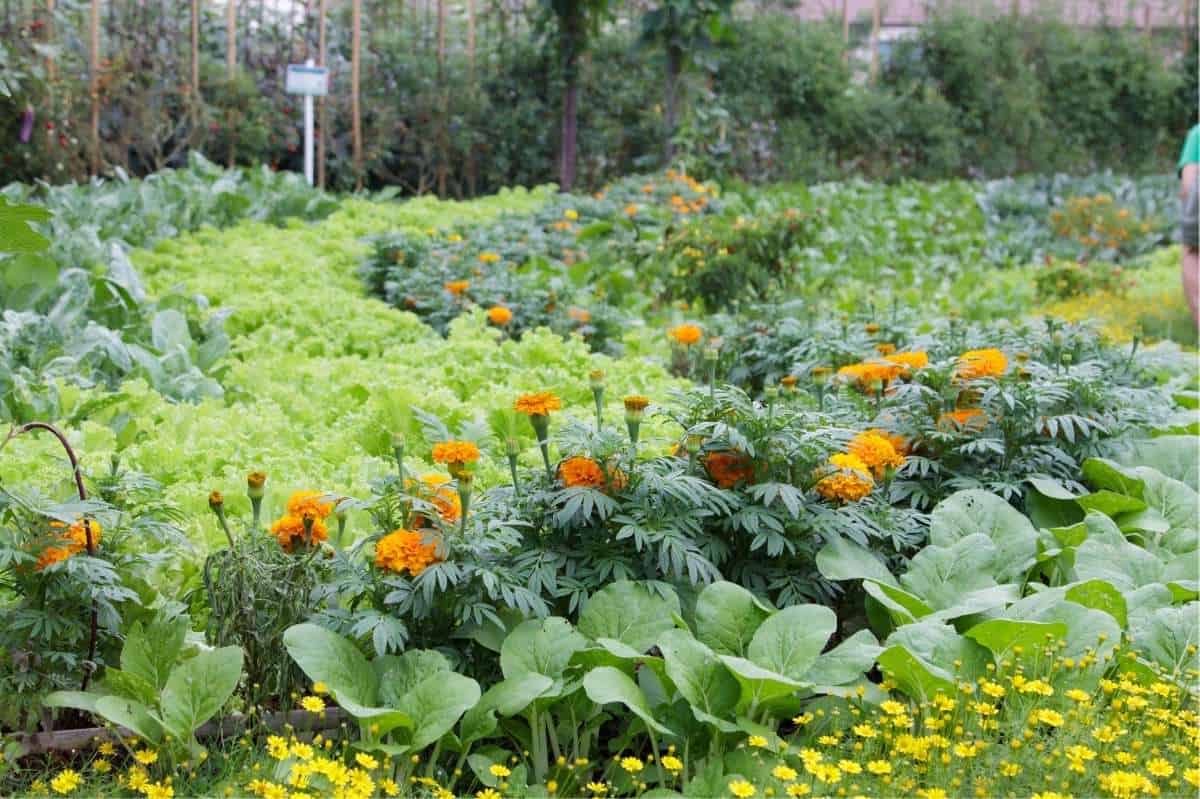
Table of Contents
Why do plants need nitrogen?
Think of nitrogen as the main fuel for plant growth. Nitrogen’s main purpose is to help plants grow big, lush, green foliage and stems. Nitrogen is used in many processes in the plant—to synthesize amino acids, proteins, chlorophyll, and enzymes.
A good nitrogen source helps your plant grow big and strong, which allows them to more easily set fruit (if you’re growing a fruiting variety), roots (for root crops), or lush leaves (for greens and other leaf veggies).

Signs of a nitrogen deficiency
The #1 sign that your soil doesn’t have enough nitrogen is stunted plant growth—but often that can be hard to pick up on if you are a new gardener or don’t have another healthier plant to compare it to.
The easiest to spot sign of a nitrogen deficiency is yellowing or lightening of the leaf color of your plant—called chlorosis. Nitrogen-deficient plants tend to have leaves that take on a yellow-green tinge—or even go full yellow if the nitrogen is low.
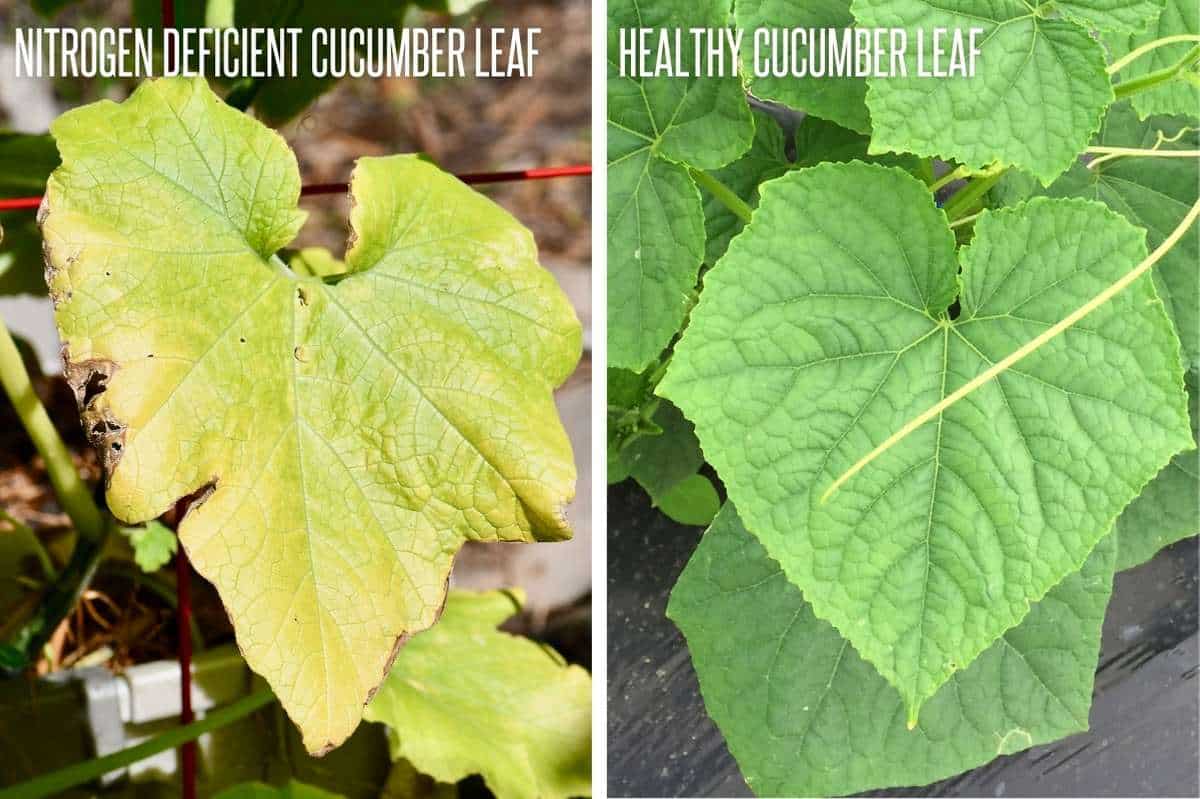
Soil testing for nitrogen deficiencies
Unfortunately, soil testing for nitrogen is tricky, because nitrogen availability is impacted by many different factors (weather, moisture, type of plant). By the time you have taken your soil sample, sent it to the lab, and it’s been tested, the nitrogen availability can have changed so much that your results won’t be accurate.
The best soil testing option is to use a home soil testing kit for nitrogen testing—but even those aren’t very accurate. You can definitely use them to get a general idea, though.
Growfully Protip
Lab soil tests will give you a ENR number on your report. This is the Estimated Nitrogen Release—which is the estimated amount of nitrogen that will be available to your plants based on how much organic matter is in your soil.
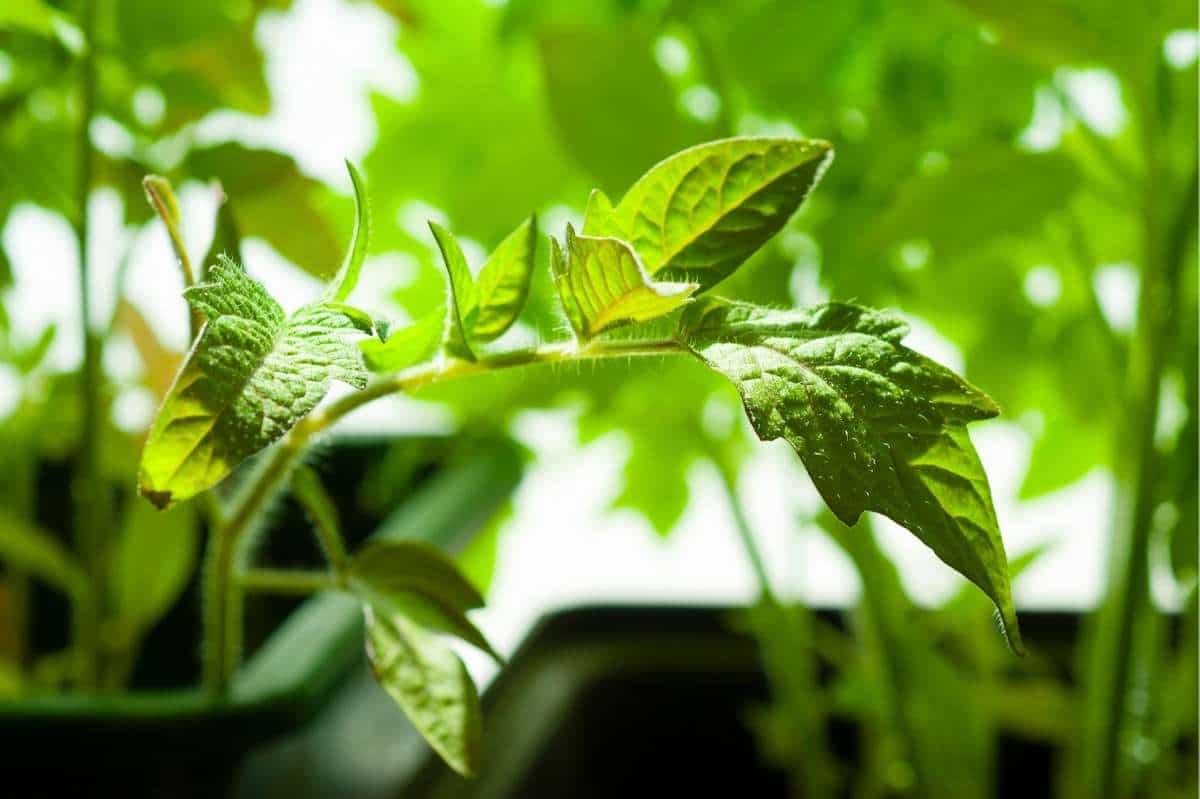
How do you know if your soil has too much nitrogen?
You may be thinking, “If nitrogen is so good for plants, it can’t hurt to go ahead and dump a bunch of nitrogen in before I plant, right?” Stop right there!
It IS possible for your plants to get too much of a good thing, and you don’t want your soil to have too much nitrogen. Why? Well, plants love nitrogen so much, that they can “pig out” on nitrogen. This makes for big, beautiful, lush, green plants—that don’t set any fruit at all!
Here are a few signs of too much nitrogen:
- If your plants are full and leafy and green, but you aren’t seeing much in the way of fruit set or flowers.
- If your leafy greens are bitter (and it’s not because it’s 90°F outside and your lettuce has bolted).
- If you are seeing lots of disease pressure on peas, beans, and other crops that fix nitrogen (meaning that they take nitrogen from the air and convert it into nitrogen the roots can use).
Growfully Protip
Compared to synthetic fertilizer, it can be hard to over-fertilize with organic nitrogen fertilizers. However, over-fertilizing is a real problem not to be dismissed. Runoff or leaching from excess nitrogen fertilizers can pollute water sources, help invasive species thrive, and cause community-wide health problems. Fertilize wisely!
What is the very best way to add nitrogen to my garden?
We’re going to give you lots of options in a sec for how to boost your N numbers, but if you’re looking for just one, all-around solution, we’ve got it for you. Organic matter.
Regular additions of organic matter (compost, manure, leaf mulch, straw, wood shavings, even used coffee grounds and tea bags!) will keep your garden fed with a constant supply of nitrogen as the organic matter breaks down.
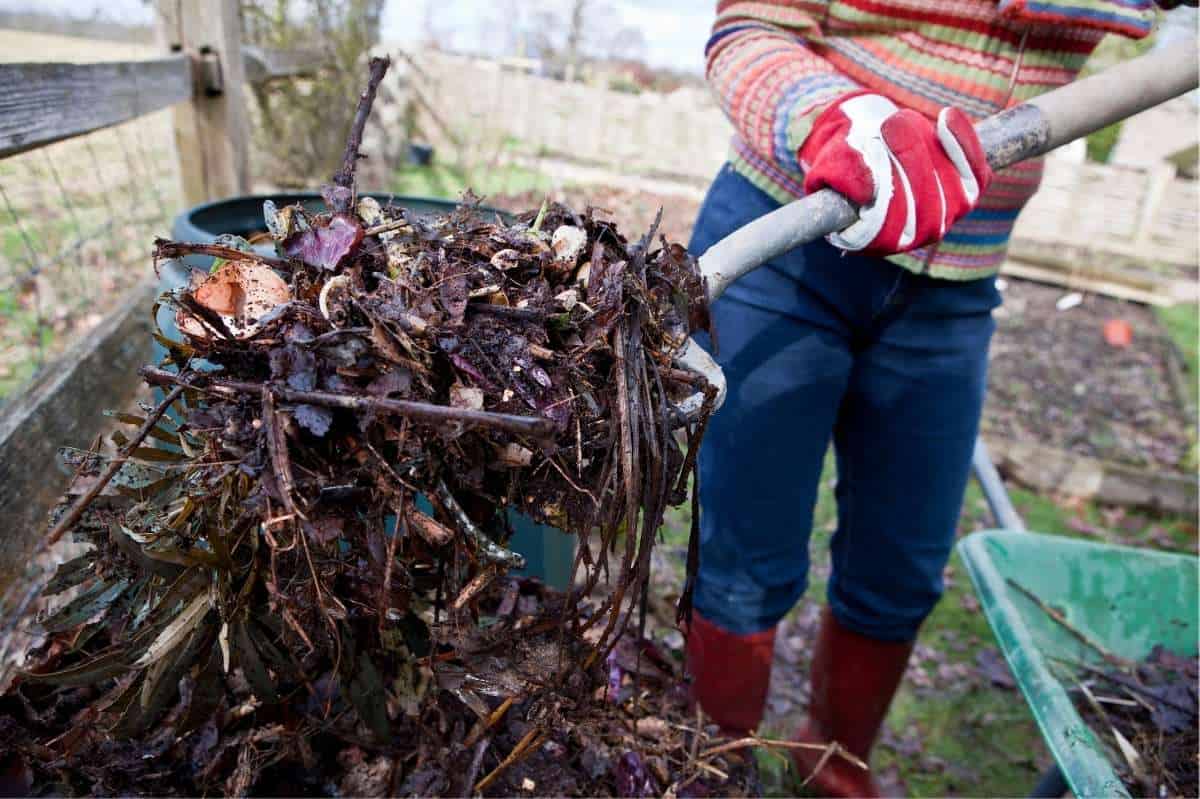
The one caveat here is that nitrogen is “tied up” (meaning, not available for plants to use) in the areas where the soil is in direct contact with the organic matter as it is breaking down. So we recommend a big addition of organic matter during a time when your garden is fallow—most folks choose fall—to give the soil microorganisms time to break down and release all that nitrogen goodness.
Growfully Protip
Another way to “add” organic matter to your soil is through cover cropping (AKA: green manure). These are crops that you grow specifically for the purpose of adding nitrogen and other nutrients into the soil. You cut, mow, or till the plant matter into the soil to break down and add nitrogen and other nutrients.

When should I add nitrogen to my garden?
Every gardener should come up with their own personalized nitrogen schedule, but when you apply nitrogen is going to depend a lot on the way you choose to add nitrogen. Here is the general timeline we follow in the Growfully garden:
- Fall: Add organic matter that can break down over the winter (straw, manure, wood shavings, leaf mulch, etc.).
- Spring: Add well-rotted compost and a long-lasting, full-season supply of nitrogen (we like feather meal—which has a high rate of nitrogen, but is slow release).
- Throughout the growing season: Foliar fertilize with liquid fish emulsion and seaweed weekly.
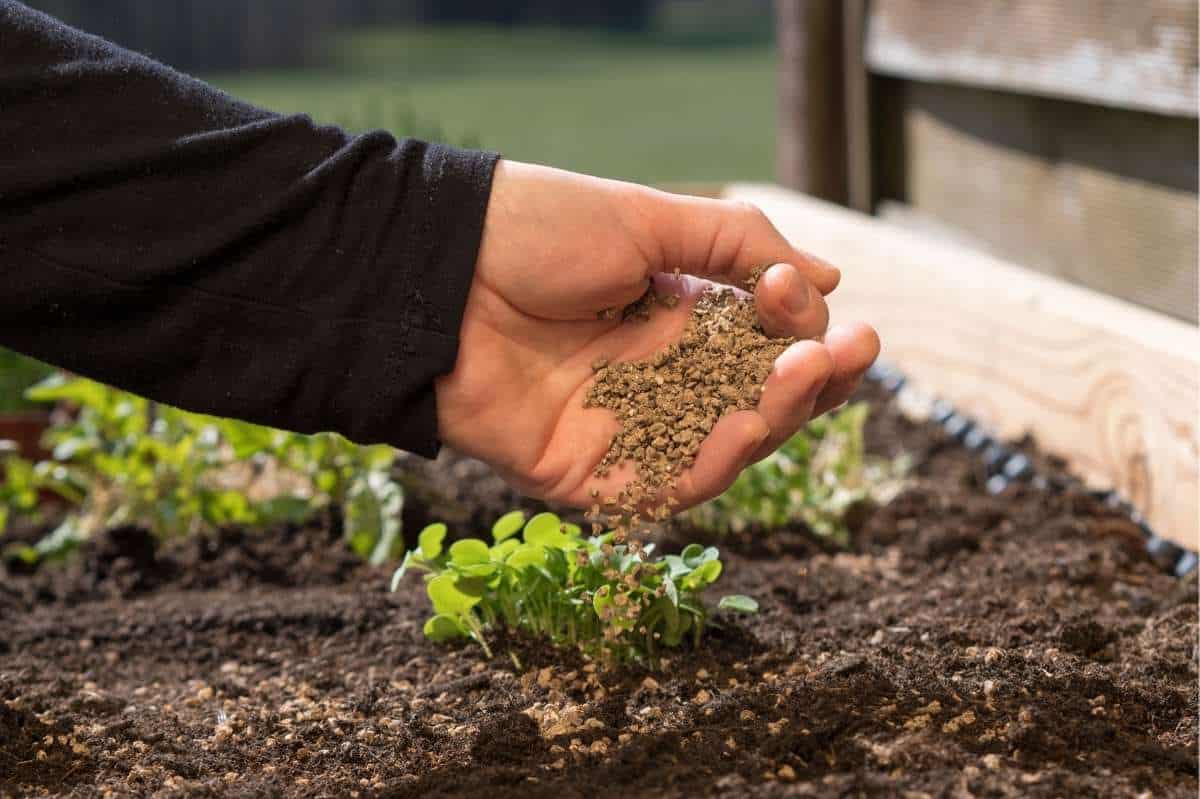
Which number is nitrogen in a fertilizer?
The three numbers on a fertilizer package are the NPK ratio, or the nitrogen (N), phosphorus (P), and potassium (K) concentrations. The numbers are listed in that order, so for nitrogen, you are specifically going to look at the first number on the label. A fertilizer labeled 10-0-5 would have 10% nitrogen, 0% phosphorus, and 5% potassium, for example.
What is the fastest way to add nitrogen to soil?
The fastest way to get a boost of nitrogen to your plants isn’t going to be through the soil—it’s through their leaves! When you need a quick boost of N, foliar fertilizer is your friend. We like using a combination of liquid fish emulsion and liquid kelp. You can (and we have!) seen a difference in leaf color within 24-48 hours after using foliar fertilizers.
Growfully Protip
The caveat with foliar fertilizers is that while they are fast-acting, their results don’t stick around long, which is why we like to have a multi-pronged attack to boost nitrogen levels all season long.
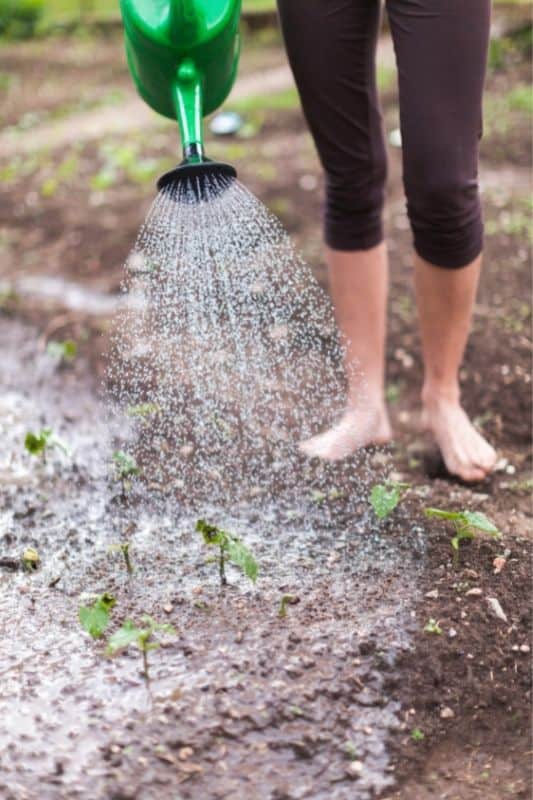
If you truly want to boost the nitrogen levels of your soil quickly, we recommend rotted manure or bloodmeal.
Bloodmeal has a very high nitrogen level for an organic fertilizer—13%—and is rapid release. Follow the directions on the bag exactly for side-dressing or adding to your beds. It is easy to overdo it with bloodmeal!
Manure is a great option for adding nitrogen quickly. However, fresh manure can be very “hot”—so concentrated with nutrients that it can burn your plants. We recommend only adding composted manure or adding fresh manure when your garden is fallow and the manure can break down over the course of a season.
Growfully Protip
It can be hard to nail down the exact N percentages of manure because it varies base on the animal’s lifestyle, diet, and breed. Chicken manure tends to have between 3-6% nitrogen levels, whereas cow manured tends to be between 1-3% nitrogen.
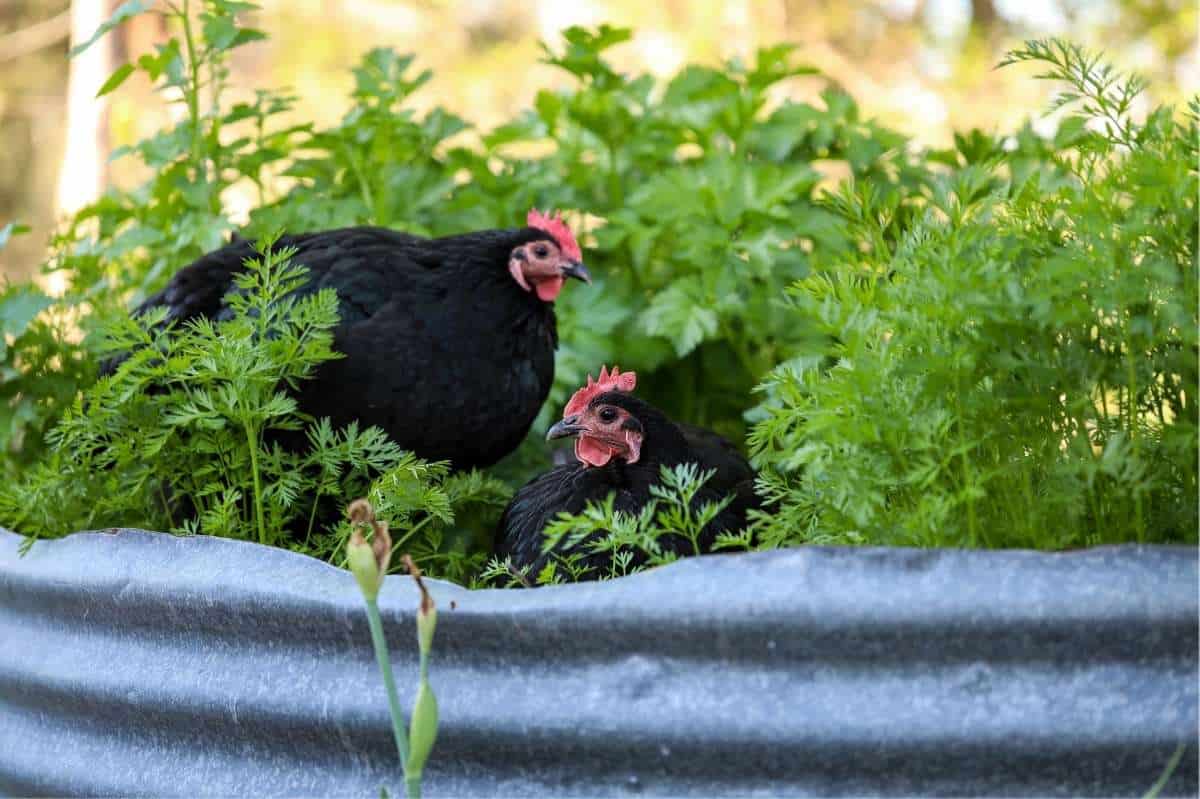
What fertilizer is high in nitrogen?
Bloodmeal and manure are two good options for fertilizers high in nitrogen. Feather meal is also very high in nitrogen, but it’s slow release—so great if you want to add nitrogen throughout a season.
One of the highest concentrations of organic nitrogen also happens to be free if you are brave enough—human urine. Don’t just start using your garden as your bathroom though. Urine is so concentrated in nitrogen it can burn your plants. It needs to be diluted to a 10:1 ratio before adding it to your garden beds.
How do you add nitrogen to the soil?
There are lots of ways to add nitrogen to your soil, and what you choose is going to depend on how often you want to amend your soil, how quickly you want the nitrogen to release into the soil, and what other nutrients your soil needs. Here are a few approaches you could take:
Soil Amendments For a Full Season Supply of Nitrogen:
We recommend adding these to your garden soil before planting—or even better, the fall before planting—so they can work throughout the growing season.
- Rich Compost. The holy grail of garden amendments—it does it all! While compost has a low level of available nitrogen, it does work well as a source of slow-release nitrogen—especially when combined with fast-acting nitrogen fertilizers like fish emulsion.
- Composted Manure. The most commonly used for fertilizer is cow or poultry manure, but horse, goat, sheep, and rabbit manure also work very well. Just make sure to compost the manure first or it can burn your plants.
- Alfalfa Meal. Alfalfa meal is a great option for vegan gardeners, and it provides both nitrogen and potassium. With 2.5% nitrogen and 2% potassium, this medium-rate release fertilizer will provide nutrients for your plants over several months.
- Bloodmeal. This one has one of the higher concentrations of nitrogen (13%) and is a rapid-release fertilizer, making it a good choice if you need to increase soil nitrogen levels quickly. You may also choose to use bloodmeal to side-dress your soil mid-season.
- Corn Gluten. Corn gluten works as both a nitrogen-rich soil amendment and a weed preventer. However, it keeps all plants from setting roots—so only use this around established plants.
- Cottonseed meal. If your soil needs a little bit of everything, cottonseed meal is a 6-2-2 fertilizer with a slow to medium release rate.
- Crab meal. Along with the 6% nitrogen levels, crab meal contains a high portion of lime, so you can use it if you need to make your soil more alkaline. Avoid if you have soils that already have a high pH.
- Feather meal. Feather meal is right up there with bloodmeal as a highly concentrated source of nitrogen. Sources typically vary from 12-15% nitrogen, but unlike bloodmeal, feather meal tends to have a slow to medium release rate.
- Soybean Meal. This is another good plant-based nitrogen fertilizer, but it isn’t readily available at many garden centers.
Growfully Protip
Looking for a quick and easy cheat sheet with all of these possible nitrogen amendments? We have you covered.
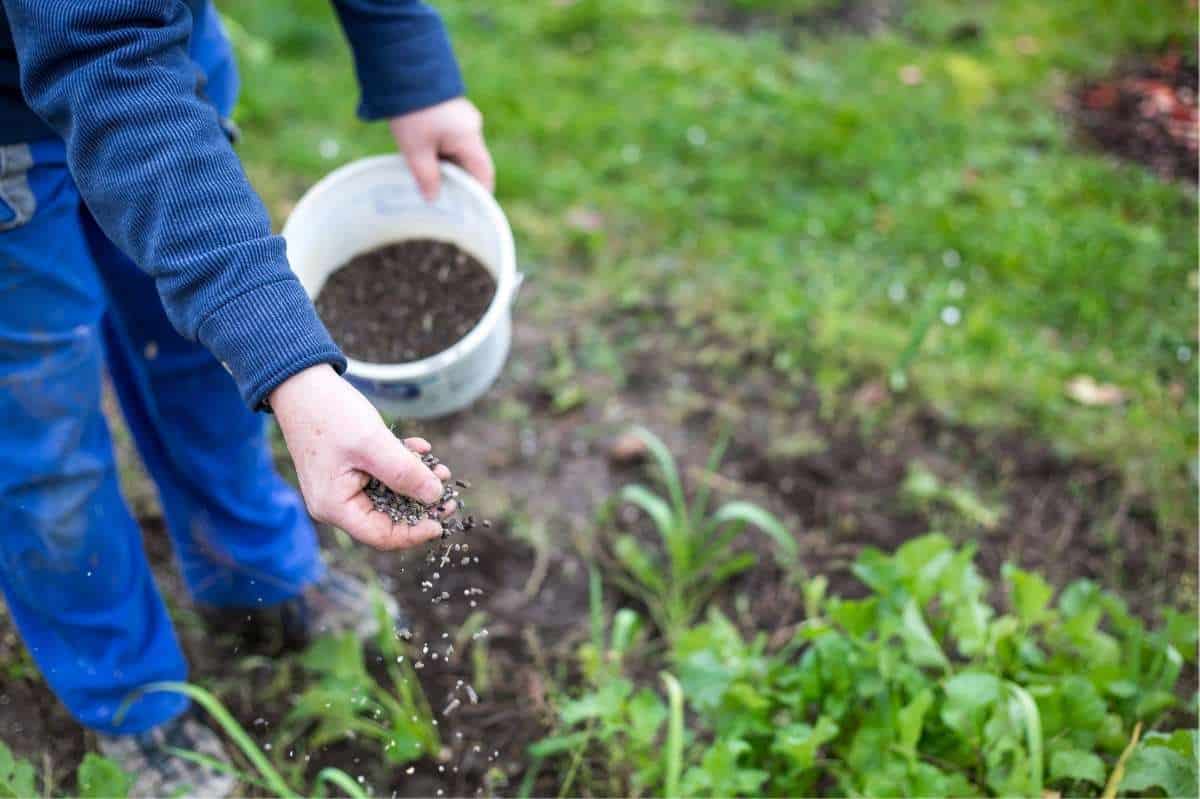
Our Favorite Amendment For Regular Quick Boosts of Nitrogen:
You’ll never find us without a jug of fish emulsion in the Growfully gardens. Fish emulsion has a nitrogen level of 4-5%, but the most important fact about it is that it is incredibly fast acting. It can turn around sickly plants in just a few days under the proper conditions. We use fish emulsion weekly in our garden.
Growfully Protip
While this all sounds complicated, we can give you a simple formula for success: add compost or organic matter in the fall, and then do regular applications of fish emulsion and liquid seaweed/kelp (which provides trace minerals) during the growing season, and you’ll have a beautiful, lush, productive garden in no time!
What plants should I NOT fertilize with extra nitrogen?
Since nitrogen is so good for the garden, you’d think you’d want to give it to all of your plant babies, but there are some plants that don’t need your help. Nitrogen-fixing plants like peas, beans, and legumes do the fertilizing themselves by pulling nitrogen from the air and converting it into nitrogen their roots can use. In a non-polluted environment with healthy soil, most nitrogen-fixing plants make all the nitrogen they need on their own.
Adding nitrogen to these plants can sometimes make them susceptible to disease and pest pressure. Peas, for example are more susceptible to powdery mildew when they are over-fertilized with nitrogen. And if you have a lot of slug issues, too much nitrogen can cause a bevy of new growth, which is exactly what attracts slugs to the garden.
Growfully Protip
Another section of plants with which you might want to go easy on the fertilizer are leafy greens. While good nitrogen levels are important for you to get lush lettuce and succulent spinach, too much nitrogen can flip the switch and make your greens bitter.

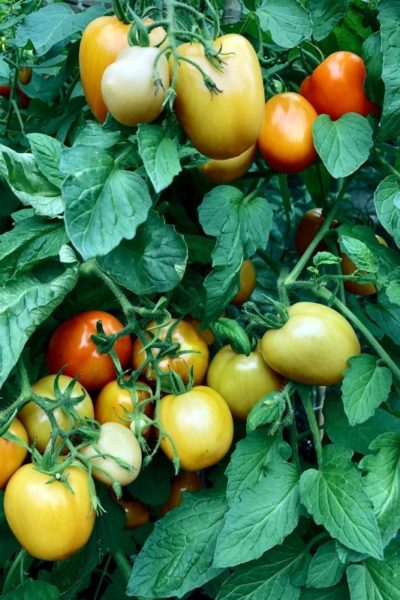






How do you become a Certified Master Gardener?
Different regions have different requirements, but usually you apply through your county’s/region’s extension office, and it is a combination of coursework, internships, and volunteer hours centered on gardening.
How would you organically address Apricot Spotted Leaf Fungus?
This is on a 30+ year old tree…
We haven’t had much experience with this one. A local master gardener or university extension group may be able to help you. Best of luck!
Hi
If too much nitrogen makes greens bitter and too little nitrogen makes greens bitter, how do I fertilize for the perfect crisp sweet greens?
Thank you
It is too much nitrogen that makes greens and lettuce bitter. 🙂